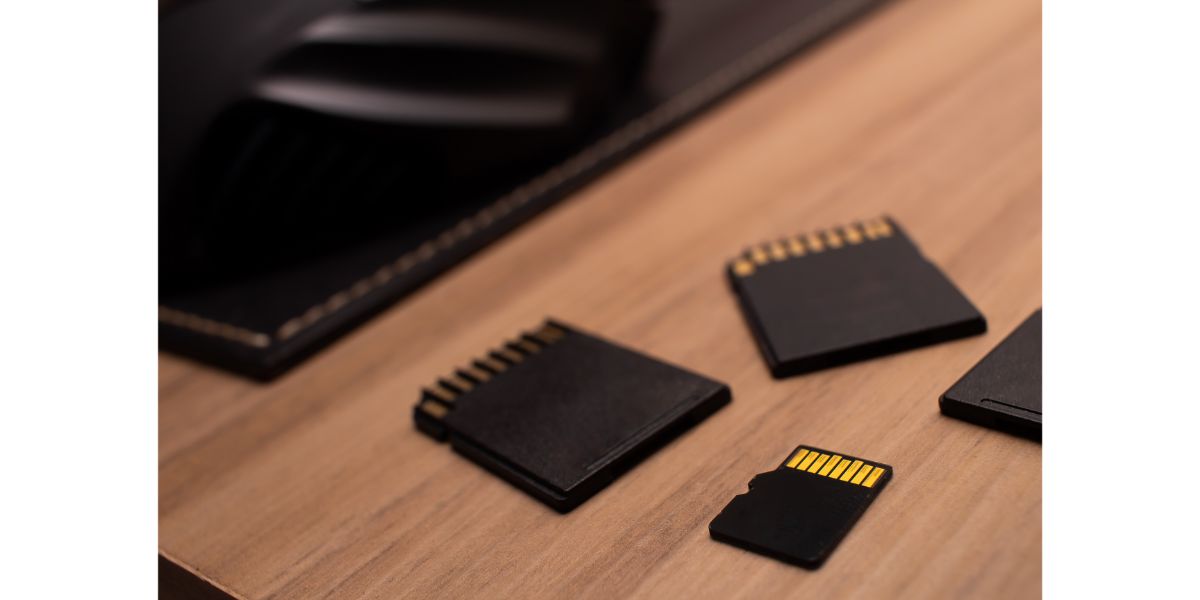Disclaimer: This post may contain affiliate links, meaning we get a small commission if you make a purchase through our links, at no cost to you. For more information, please visit our Disclaimer Page.
A Secure Digital (SD) card is a particular type of flash memory. The primary purpose of its memory is for devices to read and write data at high speeds. Additionally, it can store data in large quantities while remaining small in physical size.
These are just a few reasons SD cards remain the primary data storage units for most portable devices you use today. They are common in phones, GPS systems, music or video players, e-readers, and even larger computers. In addition, many laptops or desktops have ways to read SD cards so that you can edit the data they store.
Because they are so valuable for such a wide variety of devices, many people wonder if the data on their cards will still be helpful if the storage media gets wet. We’ll explore this very topic in our article below.
Because different kinds and levels of water may affect some SD cards in unique ways, we will divide this post into how those factors might play a role in the functioning of the card.
Table of Contents
Will an SD or MicroSD Card Work After Getting Wet?
Yes, many SD or microSD cards can still work after you take them out of the water. Secure Digital cards come in different formats; each format usually pertains to a card with its physical dimensions.
Standard cards have the largest size, but you can also find mini and micro formats that developers design to fit into smaller devices. In any case, some of these cards should still be able to function even after they get wet.
Their architecture is part of why many brands or models of SD cards can still work fine after they get wet. Other factors have more to do with specific design features that manufacturers put on some cards. All of this means that many cards should have some resistance to water damage by default.
However, it is not a given that all cards can survive any exposure to excess moisture. For example, many cards have a particular layer of lamination that should act as a barrier to water. However, this barrier is not indefinite proof against water and may fail over time.
Additionally, some manufacturers will rate cards as waterproof. While it does not mean that no moisture could damage them under any circumstances, most of these cards should have adequate protection against water.
Further, SD cards are resistant to things other than water that could cause damage. So if you worry about your SD storage media getting damaged from water, a card from a reputable brand has guaranteed quality.
With that said, you’ll still need to take some precautions when dealing with cards submerged in water. First, you must dry the cards before inserting them into any devices again. You may need to leave the card to dry for several hours before you try using it again.
If there is any visible corrosion on the surface of a card, you can try wiping it clean with some alcohol. Finally, the other layers of the card should have some protection from the laminate we mentioned earlier.
Can an SD or MicroSD Card Survive Salt Water?
Any format of SD card should be able to survive some time in salt water. However, this does not mean that it can survive such a thing indefinitely.
Thanks to the compounds in salt water, there are higher chances of corrosion than those your storage media would face in water lacking a high salt concentration. With too much corrosion, the data on your SD card might become irretrievable over time.
The chip inside the SD card is robust and has different protective layers surrounding it. Therefore, it should remain safe from salt water for some time without affecting the quality of the chip. However, it is more likely that the contacts on the card’s surface could face corrosion.
If this happens, devices might be unable to read the card to find its contents and recovering the chip from the card may be difficult. Therefore, get the SD card out of the saltwater as soon as possible.
As with any moisture, it is vital to let it dry before using it again. Even if you don’t think there has been any corrosion, it is a good idea to make a copy of the card’s contents as soon as you can.
Can an SD or MicroSD Card Survive the Washing Machine?
Yes, there is a good chance that these cards can survive a cycle in the washing machine. Most cards have ratings and features that attest to their durability against elements and external stress.
Although a normal wash cycle can be brutal on electronics, particularly with detergent or particles of abrasive debris, the layers on the card should still protect the memory chip adequately. It may be several days before you can test the card, but how manufacturers build most storage media units in this format gives them lots of protection from moisture.
What Do You Do if Your SD or microSD Card Gets Wet? (3 Things)
Whether your SD card comes into contact with salt or freshwater, there are a few steps that you can take to minimize damage to the data and maximize the chances of keeping the unit in good condition.
1. Wait
One of the best steps you can take here is the first one, which involves doing nothing. If your SD card gets wet, just set it somewhere safe and leave it alone.
It may need several hours or even days to dry completely. Although you may have to wait a long time, the card must have no water in or on it before you use it again.
One of the most common reasons for SD card failure after exposure to water involves electrolysis. This sort of thing frequently happens when people do not wait long enough to let their cards dry.
In these scenarios, the electricity through the cards encounters the remaining water and short circuits. Unfortunately, this process can fry the card completely, rendering it useless and the data lost for good.
2. Apply Low Heat
Even though electronics and heat are not usually a good mix, you may be able to speed up the drying process with the careful application of a low heat level. Any small heat amplifier that can produce this can help the card dry. You may even be able to place the unit on a surface that has its heat, such as a larger electronic device.
3. Use Compounds
This step primarily applies to any cards you find in a saltwater area. Some distilled water or alcohol might help you remove excess salt from the card. In turn, you would eliminate many elements that could build up to cause corrosion.
Because of the resistant nature of the cards, a bit of clear water should not damage the chips. However, the same rules for drying the cards out would still apply here.
How Durable Is an SD or MicroSD Card?
In general, SD cards are pretty durable. We’ve written at length about their resistance to different types of moisture here. Moreover, SD cards undergo stress tests involving heat, cold, vibrations, magnetic fields, or shock.
Conclusion
Many SD or microSD cards on the market should withstand quite a bit of time or depth levels in different aquatic environments. While data recovery is never a given, you can still take some of our steps above to improve your chances of saving your submerged cards and their contents. Even the most durable memory cards fail after many years of use, so creating data backups is necessary.


